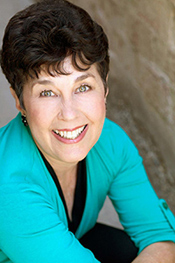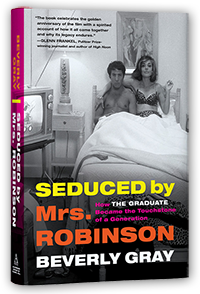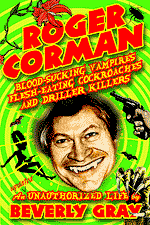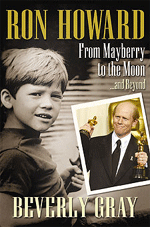Of course I have fond memories of L.A.’s grand old movie palaces, both those
that have survived and those (like the Carthay Circle, once home to Mary Poppins and Around the World in Eighty Days) that have fallen to the wrecking
ball. The Los Angeles Conservancy honors this legacy by annually staging “Last Remaining Seats,” a festival of classic films. These screen over a six-week
period at such once-opulent Downtown L.A. halls as the Palace, the Million Dollar,
and the Orpheum Theatre, which still houses a Mighty Wurlitzer organ.
It’s easy to forget that in the Golden Age of Hollywood
every city and township could boast at least one movie palace. Many are gone
now, but some – like Albuquerque’s charming KiMo Theatre and Atlanta’s majestic
Fox Theatre – have been lovingly preserved and adapted to modern use. (At the
Fox, which boasts a kind of Arabian Nights fantasy décor, I once enjoyed a
local theatre group’s live-action staging of Oklahoma!)
On a recent driving trip to Portland, Oregon, I caught up
with several classic movie palaces that, happily, continue to thrive. One
up-and-coming Southeast Portland neighborhood welcomes hipsters to the aptly-named
Hollywood Theatre, which was built in 1926 and named to the National Register
of History Places in 1983. (Its fancy façade was modeled after Rome’s Baths of
Caracalla.) Meanwhile, in tourist-happy Ashland, the Bard is the main draw, but
those weary of the delights of the Oregon Shakespeare Festival can catch a
flick at the art-deco Varsity Theatre on Main Street.
It was sweltering hot when we passed through Redding, a small city in California’s Sacramento
Valley, but I insisted on getting a peek at the Cascade Theatre. Built in 1935,
the Cascade was an important part of the Redding scene, partly because it was the
first local building to offer air-conditioning. But times change: it was
subdivided into four smaller theatres in 1979, then closed its doors in 1997. Seven
years later, it rose again, and now enjoys life as a community center and arts
venue. My interest in the Cascade stems from a story told me by a Redding
native who now teaches college in Southern California. When she was growing up,
the Cascade was the only movie house around, and new releases didn’t stay long:
“If you didn’t see it the one week it was in town, you didn’t get to see it.”
She came of age in
the Vietnam era, when parents and their children rarely agreed on anything. As
a student at the local community college, she frequently went to the movies,
because “that was sort of my only connection to the outside world.” Her dad, a high-school principal, had become
increasingly conservative over the years. When Joe and
WUSA (based on Robert Stone’s Hall of Mirrors) were booked at the
Cascade in 1970, he spotted an American flag in the ad for the double-feature,
and decided to share this patriotic pairing with his daughter. In fact, the
films were hardly pro-American, “but my dad, having paid for his admission,
insisted on sitting through both movies. . . . I thought he was going to have
apoplexy. I really thought he was going to have a heart-attack or something,
watching it. He was so enraged, but he wouldn’t leave.” It was one of only two
times in her life that they tried movie-going together. Their much later movie
outing, to see Saving Private Ryan,
doubtless pleased him more.
As motion picture distributors know, you can’t satisfy
everyone. But such is the challenge of booking movies – and seeing movies -- in
a one-theatre town.
All photos courtesy of Bernie Bienstock










Lovely places. Small town southern Illinois did not boast many of these - the one in Sesser Illinois MAY have qualified on a small scale - and it lasted through my brothers seeing movies like Barbarella in the 60's. I MIGHT have been taken there by my mom for my first movie experience - seeing Night of Dark Shadows at the tender age of four - but it also might have been a theater in a neighboring town. By the time I was choosing my own movies in the early 80's it had long since closed. (Of course, now that I've moved 1000 miles away it has been brought back to life at least once.) So, I have no real memories of attending any movie palaces. I love the pictures you have posted - lovely places all.
ReplyDeleteI love the story of the young lady seeing Joe and WUSA with dad - I can only imagine his displeasure as those two movies unspooled before his eyes.
Do you suppose any Roger Corman movies played at these venues?
Good question, Mr. C. I believe Corman movies showed up in these places, but I'm not really sure. I'll try to find out. I DO know that when I first worked for Roger at New World, one small part of my job was to record bookings of our films in various small-town venues. I may have the names a bit scrambled, but I recall the Dogwood Drive-In in Palestine, Texas, and the Magnolia Theatre in Yazoo City, Mississippi. They sounded like magical places to me. (And just once I'd love to go to SOME theatre called the Bijou!)
ReplyDeleteBy the way, one of my Redding experts (I have several) tells me he doesn't recall Corman flicks being booked at the Cascade, which tended to lean more toward mainstream Hollywood fare. Probably Roger's movies were shown at Redding's drive-ins. So that should answer your question, Mr. Craig.
ReplyDeleteIt does, but it also makes me wonder about Corman bookings across the country - how many of his films did play "hardtops" - as Joe Bob Briggs calls indoor theaters. I remember seeing the poster for Piranha at my mall's four screen theater, for example. (No, I didn't get to see it in 1978. I first saw it on VHS years later.)
ReplyDelete